“Fairies were real once…”’ the lore of Fairies and Fairy Land
Spirit of the Night. Atkinson Grimshaw
Introduction
Etymology
Characteristics
Classification
Origins
Earlier Deities and Populations
Nature, Folklore and Fairy Tales
Fairies, Ancestors and the Dead
Fairyland
References and Sources Consulted
Introduction
The term ‘fairy’ is used to loosely describe a type of legendary or mythical being of romance and folklore. These unsubstantial creatures are often of diminutive size (Edwards, 1974). As spiritual entities fairies are considered to be supernatural, preternatural or metaphysical beings in possession off unbounded magical powers. In European folklore and fairy tales they are described as typically invisible or non-substantial spirits who live on earth in proximity to, or in association with mortal human beings. Fairies are presumed to possess knowledge of hidden natural powers which therefore “…corresponds with their power of making time appear long or short to those mortals who are lured into their company.” (MacCulloch, 1912).
A characteristic and distinctive feature is their whimsicality and mischievous and prankish behaviour (Hartland, 1891). Fairies can be of benevolent or malevolent, exerting good or bad influences over the lives of humans. Their magical attributes endow them with the ability to appear or disappear at will, or change shape into animal forms (Sayce, 1934). Fairy entities, in their restricted sense are unique in English folklore, though these non-human spirits abound Celtic and Germanic folk beliefs. Among European folk and fairy tales the fairies of French and Celtic romances are often merged with the elves of Teutonic myth. Similar stories of fairy-like creatures occur in other European traditions including the Latin and the Slavic, as well as their historical origin distilled from Celtic, Welsh and Breton medieval French romances and tradition. In many regions, including China, India, and Arabia with the Jinns, there are found beliefs in the existence of supernatural, sometimes dwarfish or pygmy-like ethereal entities. Their diminutive size and appearance was cultivated in response to the tales of Victorian ‘nursery tales’ read to children “…as a supernatural race existing in the fancy of the folk or North and West Europe.” (MacCulloch, 1912).
In the Late Middle English period the term faerie meant ‘enchanted’ or referred to enchanted creatures (Silver, 1999). In addition faerie implied the persistence of ancient religious beliefs replaced with the advent of Christianity (Yeats, 1988). In folklore faeries were believed to be a hidden remnant of a once conquered people with their contemporary image and origin enshrined and perpetuated by Victorian romantic literature and nursery stories.
Common literary impressions of fairy activity in their moonlight revelries, and of fairies of the household, the streams and woodlands. For some fairies are intimately connected with or originate with, the ancestral spirits coupled with the belief that the human soul was a mannikin. In some aspects the fairy in English lore was deemed a foreigner from France or Italy. For example the ambiguous position of Morgan Le Fee who “…was once Morgan the sea goddess, later euhemerised as a mortal queen with magical powers.” (Briggs, 1957), who was the controlling force over fairies because the predecessor to magicians and witches.
The Fairy Tree. Richard Doyle.
Etymology
The term ‘fairy’ originates with the Middle English word faerie, as well as fairie, fayerye and feirie, which were borrowed directly from the Old French faerie. In Middle English the word meant either enchantment, the land of enchantment, or the collective noun for those who dwelt in fairyland. In etymological terms ‘fairy’ is rooted in the word fay or fae from faery or faerie meaning ‘realm of the fays’. In modern English usage faerie became fairy and faie became fay which refers to a ‘fairy’. In other words the suffix ‘erie’ was attached the word ‘faie’ to mean a place or something found. For the Scots fey derived from fae became ‘faerie’ or ‘fearie’ meaning illusion or enchantment. The appellation erie eventually came to define a trade, craft, or place such as midwifery, fishery, cookery, thievery, and nunnery, and thence to wizardry, witchery, roguery and knavery.
In ethnological terms the exotic word pirie or peerie “…consequently Peri becomes in the mouth of an Arab Feti” (Edwards, 1974), which migrated to England via France to become ‘fairy’. In ancient Egyptian myth fairies paralleled the Seven Hathors or patronesses of childbirth, those regarded as ‘fairy godmothers’ (MacCulloch, 1911). The word feerie or fay-erie in modern French means land, realm, enchantment, or where the enchantment took place. The land of enchantment or fairyland is where dwell the fays or fee of medieval France. The faie or fee found in Old French originate with the fata of Late Latin meaning one of the fates or tutelary and guardian spirits.
The Riders of the Sidhe (1911). John Duncan.
Moreover, the verb fari ‘to speak’ implies ‘thing spoken’ or ‘decree’ and therefore a prediction, a prophecy linked to destiny or fate. In Scotland the spae-woman was concerned with childbirth and omens. In other European tongues there are imaginary beings such as the fata of Italy, the fada of Portugal, the Provencal fada, the hada of Spain, and thence the fee of France (MacCulloch, 1912). In the Romance languages fata is a feminine noun which in the plural gives fatum or the ‘Fates’, making fays a late derivation from fatum. However, in the Romance languages entities called fays, fees, or fairies are not restricted to western European cultures. Such creatures as elves are from the word alfr and Anglo-Saxon aelf or alp which means genius, as well as the Scandinavian Norns and Vilas of the Slavs.
From Late Latin came fata rooted in fatum, and derived from fatare or feer meaning either ‘to enchant’, the ‘thing enchanted’, as well as trickery and illusions perpetrated by fays upon human perception. These deceptions and magical sleights ensured “…ugly crones are beautiful women or vice versa, fairy gold turns to dead leaves.” (Edwards, 1974). Hence fatare of Medieval Latin meaning ‘to enchant’ later exemplified an les dames faes or the ‘enchanted fairies of France’. Individually named fairies in tradition, myth and folklore include Abonde, Morgan le Fay, Avril and Viviane, together with banshees haunting woodlands and hills, and the fairy love of revelry that “…connects them with divinations in whose cult these were common, while the fairy moonlight dances may be a reminiscence of the cult itself…” (MacCulloch, 1911), echoing the sabbat of witches.
In classical mythology the Roman Parcae, or birth goddesses, were fata or fees. They were Nymphs and Fates known in Europe as descendants of the Germanic and Celtic Matres and Matronae. Also called eventually the ‘white women’ or the Bonnes Dames, Dames Blanches and Esterelle. Elsewhere these were the Be Find, Bonne Pucelles, and from the Latin the Pucellae and Bona Parcae. These matronae and others were originally trinities of goddesses concerned with springs, rivers, child-bearing and fertility (MacCulloch, 1911), the Parcae equivalent to the Roman Morai or Furies.
Titania and Bottom (1790). Henri Fuseli.
Characteristics
In the lore of fairies, and also in fairy stories, these spectral creatures were often viewed as possessed “…of a nature between spirits and men…” (MacCulloch, 1912). In general fairies had either a human-like appearance or were spirit-like creatures with a corporate semblance. In some shape or other fairy beings are a world-wide phenomenon who, wherever they occur, have some generalised characteristics in common. In many respects fairy beings resemble human beings. Euphemistically ‘faeries’ have been called the ‘wee folk’, the ‘good folk’, the ‘fair folk’, and in Welsh tradition the tylwyth teg (Briggs, 1976 a; 1976 b). Fairies can be solitary, such as the tomte in Sweden, or gregarious but usually “…not strongly individualised, and few of the Celtic fairies have personal names.” (Sayce, 1934).
Fairies have occupations and amusements, they have offspring and have fights (MacCulloch, 1912), and in folklore and fairy tales they share many commonalities in their relations to mortals, which fall into six categories. Firstly: (1) fairies help human beings; (2) fairies can also harm humans; (3) humans can be abducted by fairies for their own purposes; (4) fairies can exchange their own offspring for human babies and thus the belief in the ‘changeling’; (5) humans can be induced to visit fairyland and; (6) mortals can for a while have a fairy lover or mistress. Indeed, there is much in folklore that is concerned with protection against fairy malevolence, crediting these creatures with powers beyond that or mere mortals, and that resemble witchcraft, wizardry and practices of medicine men (MacCulloch, 1912). All occupations found in primitive communities were followed by fairies that included hunting, dancing, herding and farming, as well as being skilled smiths, shoemakers, weavers and spinners (Briggs, 1957).
One fear of fairy retribution is the abduction of women and children. This reflects a dependency on humans whereby young women and expectant mothers are stolen in order to nurse fairy offspring, and the fairy compulsion for human women to assist as midwives and suckling nurses (Rhys, 1901), or seduce mortal men and women. A stolen baby is replaced with a misshapen fairy baby, known in Ireland as the changeling. The changeling was a replacement for an abducted human baby. Old human females were also kidnapped and made to live as slaves in fairyland. The same could happen with the abduction of human midwives.
The Fairy teller’s Master (1855-64). Richard Dadd.
The popular conception of a fairy is that of a very small diminutive, sometimes tiny, creature resembling a pygmy. They are often shown as angelic, young or childlike, who are sometimes winged human-like winged sylphs. However, they can also be depicted as short, wizened troll-like gnomic figures with red or green eyes, or as tall handsome beings. Fairies have therefore a variable size, which they can change or appear as birds and animals (Sayce, 1934). In appearance some accounts describe the fairy as having the stature of a year-old child who nonetheless resembles a bearded old man, which is rooted in beliefs in ancestral spririts. In appearance and disposition sometimes they are beautiful, sometimes they are hideous (Briggs, 1957), as shown by spriggans of Cornwall, or the Northumbrian duergans. It is often the case of the female beautiful fairy being contrasted with the ugly male fairy, as with the Irish merrows.
The Fairy Ring (1850). George Cruikshank.
In folklore fairies are described as humanoid with magical powers and the ability to shape-shift, with a propensity for malice and mischief whose origins are even demonic. It is also believed that fairies cannot tell lies. It is among the fairy lore of the Celtic peoples there occurs the widespread theme of a race of ‘little people’ who were driven underground by invading tribes.
In Scottish folklore the good fairies, the Seelie Court, are well disposed towards humans, whereas the ‘unseelie court’ or bad and malicious fairies work their evil against mortals because some fairies are noted for malice and mischief. Therefore fairies hostile to people are feared because they ruin or steal crops, drink or food, tools and grain, who milk cows and ride horses during the night, blow out candles and disrupt households. Their pranks can be a punishment for a perceived wrong. Fairy assistance to humans and mortals is well attested with regard to home, hearth and farm. Although in general terms fairies are helpful, they are also mischievous and harmful to people if so roused. In the household they will do chores such as floor sweeping, dish washing, and tending the fire.
A Fairy Tale (1895). Arthur Wardle.
The Seelie Court are the good fairies of the Scottish lowlands (McPherson, 1929) who however can be hostile to humans if displeased. The unfriendly fairies are the Unseelie Court who are malevolent and concentrate their activities on harassment, injury, terror and even extermination of mortals. The Useelie Host or the Host of the Unforgiven Dead are the Sluagh of the Scottish Highlands (Wentz, 1988). The Sluagh are therefore the evil ones. They are numbered among the trooping fairies, along with the Devil, the Dandy Dogs and the Yeth Hounds. Also with other creatures of ill-omen who hunt in packs, such as the Gabriel Ratchetts and the Welsh Cwn Annwn. There are also individual malevolent fairies such as the Duergar of the north country as well as the Black Dwarfs of English folklore, Germany and Scandinavia (Heslop, 1892). Similar to the Durgar are the Border Redcaps as well as the Dunters and Powries who are less murderous than the Redcaps.
Fairies are attributed with ability to become invisible at their own choosing, and affected by donning a magic cap, cloak or using certain herbs, and thus they can “…disappear, change their shape, and appear as human beings…” (Sayce, 1934). This fairy characteristic is bestowed by their power of glamour, shape-shifting and casting illusions.” (Briggs, 1957). The word ‘glamour’ was a Scottish term introduced into English literature that means magical, fantastic with the ability to juggle with the sight (Edwards, 1974). In other words glamour Is a magical charm cast by devils, wizards, a coup d’oiel in order to deceive the eye of the receiver. Indeed, humans have to be especially careful in their dealings with the fairies.
A portrait of a fairy (1869). Sophie G. Anderson
These diminutive beings are also deemed extremely long-lived if not immortal, as well as being “…dangerously amorous and have a tricksy love of practical jokes.” (Briggs, 1957). Their domain is regarded as being underground, a subterranean abode in tumuli, barrows, under hills or even beneath rocks and stones, and as ghosts “…haunt waste places, caves, rocks, ruins, and waterfalls, to have homes beneath lakes and to be associated with uncanny objects such as snakes, will-o-the-wisps, megalithic monuments…” (Sayce, 1934).
Puck and the Fairies (1850). J. N. Paton.
Fairies are often solitary spirits dressed in brown or grey compared to the popular conception of green apparel, skin and hair. Germanic dwarfs are commonly depicted wearing grey clothing. However, their clothing is quite varied though white is also popularly associated with fairies. Common also are red caps whilst hobs and brownies often clothed in rags.
Fairies, however, rarely harm mortal humans which includes those they abduct or lure to fairyland. Nonetheless a mistreated fairy is not incapable of retaliation by spoiling crops and setting fire to a household. The relationships between faerie and mortals can be further appreciated by the stories about fairy and mistress lovers which in literary terms often possess a drama and poesy. Such fairy stories have an established pattern of four main strands of: (1) a human loves a supernatural; (2) the spirit or fairy consents to the human dependent upon certain conditions and provisos; (3) the human eventually breaks the agreed taboo and loses his fairy lover, finally; (4) the lover attempts to retrieve or recapture the loved one, sometimes being successful. A similar set of conditions apply to fairy tales about fairy mistresses. A complication arising out of such an arrangement of a human-fairy marriage time that has lapsed. The sad result is that both time and age rapidly cat or liaison is the wish to catch up with the human lover.
Lily Fairy (1888). Luis Ricardo Falero.
All fairies are ascribed as being intensely enamoured of dancing, music, singing, feasting and revelry, that may persist as “…actual rites of orgiastic character…” (MacCulloch, 1912), and so have their origin in rustic festivals and agricultural magical practices.
An aspect of moral disposition of fairies is their being arrant thieves. Even good fairies purloin the property of mortals. Nonetheless they are also lovers of kindness, virtue, chastity, and cleanliness (Briggs, 1957). They take pleasure in playing tricks on humans such as taking food, spoiling the milk of cows, and minor mayhem if vexed. In other words they need to be placated if in a dangerous mood.
Fairies often help humans, distribute money and food to the needy, work counter-spells against witchery, and in the true spirit of the house fairy they will accept small rewards for their services (MacCulloch, 1912). Fairies also abhor greed and in medical matters are often resorted to by humans (Briggs, 1957), even though themselves they are dependent on human aid.
Folklore beliefs across the world attribute fairies to the detritus of ancient animistic beliefs. A spirit is regarded as a property of an inanimate object and archaic mythic figures are transmuted into fairy personages in later belief so “…fairy-lore must have developed as the result of modifications and accretions received in different countries and at many periods…” (Sayce, 1934). This links belief in fairies to the ancestral spirits of clan members. Ancestral spirits explains the beliefs in fairy subterranean dwellings as the domain of the dead, as well as the “…little difference in attributes, characteristics, and actions between Celtic fairies and Teutonic or Scandinavian elves, dwarfs, and trolls…” (MacCulloch, 1912).
Classification
Fairies are known by different names in various parts of the world, and fairy beliefs are complex, of great variety and antiquity, type and origin (Briggs, 1957). Various fairy folk exist in English folklore (Yeats, 1892), as well as including the elves, the abarativa, the Scottish wild horses or each uisge, the English Black Dogs, and the Irish sidhe. The fairy types resemble creatures from other mythologies in having numerous definitions. On other occasions these ethereal entities or sprites are referred to as magical, as goblins or gnomes. Some fairies are connected to specific places or localities such as the buccas in mines, or the Salamander in fire. In classificatory terms fairies have been separated into two large groups: (1) the fairy ‘race’; and (2) the solitary fairies. The fairy ‘race’ or ‘nation’ are located in ‘fairyland’ as a structured society. Included are the Irish ‘side’ or ‘little people of the hills’ and the Germanic dwarfs. The solitary fairies were connected to occupations, localities, and even particular households that include the water sprites and undines, the shoemaker leprachauns.
Another classification divided fairies into three species (Edwards, 1974) which were: (1) a dwarfish subterranean imp with benevolent magical powers, with green hair and clothes; (2) the solitary fairies. The fairy ‘race’ or ‘nation’ are located in ‘fairyland’ as an organised society. Included are the Irish ‘side’ or ‘little people of the hills’ and the Germanic dwarfs. The solitary fairies were connected to occupations, localities, and even particular households, that include the water sprites and undines, the shoemaker leprechauns.
Prince Arthur and the Fairy Queen. J. H. Fuseli.
Another classification divided fairies into three species (Edwards, 1974), which were: (1) a dwarfish subterranean imp with benevolent magical powers, with green hair and clothes; (2) tiny mischievous but protective household sprites associated with the hearth, and; (3) small ageless and winged females dressed in diaphanous material who contributed benevolently to humans, and who lived in fairyland. Another classification divided the English fairies into five classes (Briggs, 1957). These were: (1) the homely and the heroic; (2) the small fairy families or solitary fairy; (3) the tutelary fairies; (4) the nature fairies, and lastly; (5) the supernatural hags, monsters and giants. A urther group included the Morgan Le Fee type of magician.
Water Lilies and Water Fairies. Richard Doyle.
Contemporary and modern definitions of fairies have been derived from the fee of France, meaning a being of supernatural powers possessed of the boon of divination and influence over human destiny (Edwards, 1974). These French enchantresses carried wands, as did the Fates carry staffs, it is noteworthy that fairy-godmothers also carried a wand, thus the “…fairy godmother of the sophisticated French tales…is probably descended from the Fate of whom Fata Morgana was one.” (Briggs, 1957). By the middle-ages, around 1300, the three species or ‘races’ were distinguished. Firstly, the small type. Secondly, the dwarfish and goblinesque brownie type. Thirdly the taller stately attired damsel fairy. In modern parlance all fairies are casually referred to as the ‘little people’, hence “…distinctions have been lost, all ‘little people’ are discriminately fairies, and the differences, even the old names, are in danger of being banished into the limbo of forgetfulness by the quite artificial fairy of juvenile literary commerce, with gauzy wings and shirts reminiscent of the ballet.” (Spence, 1948).
Titania (1866). N. J. Simmons.
The most common fairy tradition in English folklore is that of the homely Trooping Fairies, who have farming connections, are variable in stature and can be either helpful or mischievous. The aristocracy of fairyland are the Heroic Fairies who live like the medieval nobility with a court and a king and queen. Typically of human size they hunt, sing, dance and engage in stately processions and revelry. Those of the Tutelary Type are attached to a human family as helpful diviners or omen bearing sprites. In this group are included the household brownie and the clan banshee. Such beings of this type are often the delicate silkie or brownie in Northumberland, which can become a boggart (Briggs, 1957).
The solitary and small family bands are independent spirits who frequent or haunt particular locations. Examples include the Border country Habetrot or spring fairy, as well as Irish cluricans and leprechauns. The small fairy family type are those who obtain human midwives for their family offspring. Nature fairies are widespread with the most common in English fairy lore being the water-sprites and the mermaid. The Scots have legends and beliefs in the loch living kelpie as well as the
The Visit at Midnight (1832). E. T. Parris.
Seas coast Nuckleavee. In the Highlands wanders the wintry blue hag known as the Cailleach Bheur, whilst in northern Britain there is Jenny Greenteeth who haunts stagnant pools (Briggs, 1957), in addition to the Scottish fruit protecting Churn-milk Peg and Awd goggie. Considered also is the guardian of wild animals known as the Brown Man of the Muirs.
Elves and the Shoemaker. By Folkard.
Another group, sometimes locally called ‘frittenings’ are the monsters, giants and devils who also include the supernatural hags who are less spiritual than the fairy demons. Such type of creature, boggart or hobgoblin are called according to locally braches, Padfoots, barguests, and brags. Quite often they adopt the form of an animal though they do not possess the ability to shape-shift.
Tuatha de Danaan.
Origins
In terms of origin fairies are a conflation of many strands and elements of folk beliefs, speculations about natural or hidden species, descendants of former subjugated populations, ancestral spitits and ghost, or fairy tales, myths and legends, literary compilations, as well as fallen angels and demonic creatures. In other words there is in fairy lore no single origin.
In Fairyland. Richard Doyle.
A number of theories have been postulated to explain the origin of fairies. Four main theories account for the origin of the belief. The concept may have developed from: (1) folk memories of earlier peoples conquered by the present inhabitants, hidden or lurking remnants, of previous populations lingering in caves or mountain recesses. Defeated or replaced peoples who prey on the occupiers in night-time raids and hence their supernatural reputations; then (2) degenerated deities of heroes whose stature has been reduced in importance. The allies of this group are the nature spirits; the (3) personifications of nature spirits originating in animistic beliefs of archaic peoples. The tree spirits and spiritually endowed inanimate objects. Such entities are anthropomorphised water spirits, undines, dryads, hill spirits, and the sidhe of Ireland. An example Queen Medb is the ‘queen of fairyland’ and euhemerised in the Irish epics. In group (4) are the ancestral spirits of the dead or the dead themselves who provide a strong and “…close association between fairies and the devil.” (Briggs, 1957), in the sense that fairies live below ground in tumuli and barrows as revenants, making fairyland a realm of the dead.
This explains the popular allusions to the link between devilish traits of horns, cloven hoofs and shaggy hides and images of nature spirits and folk gods. The association between demons and fairies may also originate with the peris or pieris of Persia whose not so wholesome activities were belied by their enchanting appearance, hence early beliefs in “…malevolent female demons…employed by the ruler of darkness to bring disaster to mankind, send comments and eclipses, prevent rain, cause failure of crops and spread famine and disease.” (Edwards, 1974).
The tradition of fairy superstition has no single origin, a number of causes being credited with causality, that include trance, dream states and psychic experiences. The persistence of the belief in fairies has been traced to “…animistic beliefs modified and altered in different ways by traditions about other races, by beliefs in ghosts, and in the debris of older myths and religions.” (MacCulloch, 1912). In England there survives little belief with the remnants consisting of mythological tales, heroic legends, fairy tales and ancestral echoes (Sayce, 1934). The existences accredited to fairies are contradictory. Some ascribe their living underwater, others to a subterranean existence, or in sacred groves. Wherever they occur fairies are mythical beings, the “…creations of fancy utilising existing beliefs, traditions, customs and experiences.” (MacCulloch, 1911).
The Quarrel of Titania and Oberon (1898). N. Paton.
There is an ancient and universal belief in the existence of an underworld principle. Howver, opinions as to its origin differ. Various explanations exist in folklore to explain fairies as the residue of doomed and rebellious angels. There is the fantastic association of fairies with cave dwelling spirits, and that “…fairy lore may therefore contain remnants of old mythologies…” (Sayce, 1934). The idea of the doomed insurrectionary angel is found in Celtic belief (Sikes, 1880; Keightley, 1900; Wentz, 1911). In Irish mythological tales fairies are referred to as the Tuatha de Danaan. Their origin is assumed to be derived from ancient goddesses, priestesses, nature spirits, nymphs, druidesses, the Fates (MacCulloch, 1911) making the fairies and the Tuatha the descendants of primordial gods and goddesses.
The Visit at Midnight (1832). E. T. Parris.
The idea that fairies are the result of a degradation process from ancient deities is not uncommon (Sayce, 1934). This is exemplified by the occurrence in goddess origin belief in fairy origin by the specific individuality of these spirits, even their names (Hartland, 1891). The concept of the fairy world is one that parallels the human that “…in many parts of the world centred about spiritual beings that bear many resemblances to our fairies.” (Sayce, 1934). In other words the otherworld social conditions are a reflection of our own. An example can be found in the Irish mythological cycle. The core of the myth is that the Tuatha de Danaan descended from the sky or, more likely, the northern islands. These Tuatha, the people of the goddess Danu, were defeated by otherworldly beings in battles, with further defeats by the ancestors of the modern Irish. The Tuatha forced to retreat, took to the ‘fairy mounds’, the ‘sidhe’, where they survived as ‘little people’, the fairies. In this underground haven or ‘world of spirits’, these people of the mounds or sidhe, existed in a land where everything was reversed, day was night, night was day, left was right and vice versa.
Fairies, as supernatural creatures were assumed to live in habitations underground, within the pleasant hills, called sidh or sith by the early Irish. The divine sidhe called the dinna-shee means “…people of the fairy mansions.” (Joyce, 1871) . Knowledge of these fairies known as the Tuatha de Danaan is very scant as are their chiefs called the Dagda and Bove Derg. The term originally applied to a fairy fort, mound or palace was sidh, and which over time came to mean a hill. During the passage of that time the word sidh came to be applied to the fairies themselves – fairy being sidheog pronounced sheeoge.
In the folklore of southern and eastern England faeries became known as frairies, feriers, ferishers, or as farises and even Pharisees. The word originated from the fear sidhean or ‘fair-sheen’ of Irish Gaelic. This shows a connection with the sidhe of the Celts (Edwards, 1974). In Ireland the Daione sidhe were not necessarily diminutive. In the Scandinavian Edda the ‘light elves’ lived in the realm of Alfheim, who were separate from the subterranean ‘dark elves’ or Dockalfar, who in turn were divided from the dwarf Dvergar. One fairy type, which was derived from, or even part of the household or ancestral spirits, was the brownie or house fairy. Brownies, in common with leprechauns, did not live in communities but often separate from the ‘trooping’ bands, who were the Sid in Celtic tales. The heroic fairies dwelt in splendour and luxury with names like the ‘fair folk’, the ‘still folk’ with a king and queen (MacCulloch, 1912), and whose names included Aine, Fionnbher, and Aoibhinn. In Old English ‘Fairy Farm’ or ‘Fairy Hall’ was from the word meaning enclosure, in other words haeg for feargh or pig sty. In English folklore the term faeger meant fair and eager or eye thus an allusion to beautiful eyes.
Under the Dock Leaves. R. Doyle.
Individual fairy names included Miala, Cliodna. Gwion, Huldra, Oberon or Alberon (MacCulloch, 1912). The Welsh fairies were known as the ‘Fair Family’ or Tywyth Teg who were smaller in size than humans. The image of these diminutive creatures was the beautiful appearance, golden hairs, benevolence and white apparel. This contrasts with the industrial and metal smith dwarfs called in Europe the nains, cluricauns, zvorge, draws dvergar, and the bergmanntein. Such etymology during the medieval period existed beside the fact that “…most Englishmen could not even read English and Latin was worse than double-Dutch, all learning was a mystery to them.” (Edwards, 1974).
Earlier Divinities and Populations
Some elements of folklore have great antiquity and these contributions from all historical periods. It is already established that no particular source can explain the origin of belief in fairies.. It is known there was a regular antagonism between the role of the church and the fairy belief. The pre-Christian origin of fairy lore is shown by the great antiquity and distribution of fairy tales (Sayce, 1934). There are many archaic concepts associated with the lore of fairies which include shape-changing and extra-corporeal spirits. A parallel instance can be seen with witches and fairies. The connection between fairies and witches is a close one including the belief in “…bodily or spirit transportation though their air on the part of or by witches or fairies…” (MacCulloch, 1912). The belief in Gyre Carline is a Scottish fairy tradition of the elf-queen as the mother witch.
The Fairy Queen. J. N. Paton.
Fairies, as demoted or denigrated pagan deities may have been worshipped as minor goddesses, nature and tree spirits, as well as nymphs. For example water fairies may be remnant water spirits who, like the Scandinavian ‘elves’ and English ‘pixies’ are the “…trace of the ancient cosmology which divided the universe into various orders of being, gods, men and elves, dwarfs’ giants and monsters.” (Briggs, 1957). After the development of Christianity such beings survived, in a reduced state in the folklore beliefs and fairy tales, condemned as evil beings by the church. For some scholars many fairy stories were about real but euhemerised individuals or peoples (MacCulloch, 1912). The Victorians explained ancient gods and goddesses as metaphors for natural events accepted as literal happenings. Many references to fairies describe them as personifications of nature and abstract god-like notions. Therefore there was, in ancient Europe, an animistic religious belief coupled with memories of subjugated earth and mound dwellers.
If fairy belief suggests an archaic connection with real people, clans or cults, this “…probably goes back to the hostile relations which may have existed between Palaeolithic and Neolithic folk (MacCulloch, 1912). The widespread and one-time belief in the ‘little people’ has its origin in the pre-animistic and primordial communistic ideas, and are the true historical basis of belief in fairies. This is borne out by the folkloristic concept that fairies disliked the imposed civilisation on their aboriginal culture.
Leprechaun
Ancestral spirits are generally believed to be. Not only still members of the clan, but also to keep their human characters. These ghosts in the fullness of time were transmuted from folk memory into other forms. Fairies may have originated as the ancestral spirits or ‘ghosts’ of prehistoric clans “…transformed in popular fancy into actual supernatural people dwelling underground.” (Allen, 1891). If fairies are the ‘ghosts’ of earlier populations then the basis of fairy-lore consists of tales handed down of contacts with previous peoples. These peoples could either have been earlier inhabitants or immigrants. In time such peoples would have become mythical beings, no longer ghosts, no longer memories, but fairies. The remnants of actual historical populations.
For example the incoming metal equipped Celts would have conquered the stone weapon using people. The Neolithic people would have been hostile to their Celtic conquerors. In this scenario the defeated aboriginal population would have come to be seen as an underground living people, thus “…the inhabitants of the Neolithic tumuli grew to be regarded as a very tiny set of spirits…” (Allen, 1891). To the mind and thought of prehistoric people “…the distinction between living people and the ancestral spirits may not be so sharp as it is with us.” (Sayce, 1934). The folk memory of a pre-existing prehistoric people. Mistakenly believed to live in mounds and barrows, were transmuted into fairies. Therefore the possibility that such remote figures in time no longer seen as ghosts but as fairies.
Traditions, myths and legends about diminutive or pygmy populations exist in every myth and folktale, hence myths refer to “…former inhabitants of the country transmuted into mythical beings.” (MacCulloch, 1932). One theory is that fairies are a lurking remnant of primitive tribes and clans. In other words the “…small fairies derive from the memory of a conquered race of pygmy people…” (Briggs, 1957), and that the fairy superstition originated with the relationships between a dispossessed smaller population and taller conquerors. The implication is that fairies were once actual people. Therefore the question arises were fairies and earlier race of people?
ng
Morgan Le Fay (1864). F. Sandys.
It is established that the fairy superstition is widespread. Theoretically it may be that the origins of fairies are to be found with prehistoric peoples forced out my invasions and immigrants. The incoming invaders would have their own beliefs who would have possibly been welcomed by some of the existing people. In other words some ancient animistic beliefs would have survived if the invaders did not exterminate the original population (Sayce, 1934) but placated the encumbent ancient spirits as a policy. Many ancient pagan rituals and sites were Christianised on this basis.
Among the Celtic nations there exists a common theme of a ‘hidden people’, a race of diminutive people driven into hiding by invaders (Silver, 1999). There are many tales of migrating dwarfs and elfin creatures due to incursions of others (MacCulloch, 1932). The dispossessed disliked the human invasion which prompted retaliatory raids and revenge attacks, as well as unseen and nightly incursions There arose stories of theft, borrowing, kidnapping, and other sinister happenings that “…reflect incidents in the contact of conquered and conquering races.” (McCulloch, 1932). The resistance came to be regarded as a nation of spirits living in an underground otherworld of burial mounds or somewhere across the sea (Silver, 1999). Much of the lore of fairies and fairyland is rooted in the belief that fairies lived in duns, stone circles inhabited by ‘little people’, the devil. Picts, and giants.
Caliban
There is no evidence that tumuli were once the habitations of earlier populations. Neither is there for giant Cyclopes being the builders of ancient Mycenae. Some features ascribed to diminutive populations, which resemble those of fairies, do not apply to the Picts who were not a pygmy people. Indications are in fairy-lore, that the belief is the persistence of archaic cults rather than the survival of primitive peoples (Briggs, 1957). Is the belief in fairies derived from a belief in earlier divinities who themselves in origin were nature spirits who displayed fairy traits? For the ancient Brythons their later mystical divinities were once fairy beings, fairy kings and queens. Ancient divinities are still remembered in Italy who had fairy-like features exemplified by domestic Roman gods who resembled brownies.
Fairies on a shell. J. N. Paton.
Nature, Folklore and Fairy Tales
The supernatural being called a fairy is probably one of the most well known creatures in folklore and fairy tale. There are local and regional variations in folklore and “…stories of fairy-like creatures are to be found in nearly every part of the world…” (Sayce, 1934). There is evidence to suggest that the characteristics of dwarfish beings and fairies represent an earlier race of people. However, folklore is not a static subject set in stone. Such a simple and primitive belief in fairies can occur at different times and in different places. One theory claims that the origin of fairy lore is in fact animistic, and thus such ideas are “…the basis of the fairy creed, attached now to all kinds of supernaturals, now to traditions of actual men.” (MacCulloch, 1932).Within folkloric belief there is the phenomenon of associating the uncanny with the uncanny, the unusual with the unusual, and with beliefs about spirits and this “…general body of beliefs…tend to vary from one region to another, from one people to another.” (Sayce, 1934).
Modern perceptions of fairies as diminutive and fragile creatures is the responsibility of William Shakespeare and the Elizabethan poets. The play ‘A Midsummer Night’s Dream’ is a case in point which was richly illustrated by Victorian artists. For example fairies were referred to as ‘little atomies’, as ‘small grey-coated gnats, or coachmen’, as well as nymphidae, ‘flower fairies’ or coachmen, ‘fluttering sprites’ who swim in the air and ‘ride the whirls of dust.” (Edwards, 1974). The spirits of the air were called sylphs from the Greek word silphe meaning a caterpillar. It is also a reference to the Latin term of silvestris nympha or ‘nymph of the woods’.
Morgan Le Fay (1862). E. Burne Jones.
With regard to elementals it was believed that fairies were an intelligent species distinct from angels and humans (Silver, 1999) and that elementals were thought by alchemists to be gnomes and sylphs. The concept that fairies are a component of ancestor cults is common among folklorists. Therefore it is argued that fairies were once ancestral spirits because many beliefs and customs agree with the theory.
Ancient peoples held the belief that inanimate things, animals and plants had souls of their own. It is not really clear what the relationship was between these nature spirits and ancestral spirits. Therefore, if the belief in fairies developed from belief in nature spirits, then fairies may represent either these half forgotten nature or ancestral spirits, perhaps both (Sayce, 1934). The development of fairies from ancient concepts of nature spirits is an animistic belief. Animism saw spirits as the denizens of stones, wells, streams, trees and groves who were regarded in some quarters as ‘fair folks’ or – ‘guid neebors’.
Ancient peoples paid homage to these earth and nature spirits who “…tenanted the little green knolls, spirits that that were usually invisible to the mortal eye, but at times made themselves known in human forms.” (McPherson, 1929). There developed over time the belief that “…earlier gods, connected with agriculture and growth, have for centuries been regarded as fairies…” (MacCulloch, 1911), with the activities significant at Beltane or May Day, and Samhain or November-eve (Wright, 1861). Some fairies were not connected with archaic deities but seen as direct descendants of the nature spirits of wells, trees and rivers. The Celts of Gaul worshipped fairy entities as niskas and peisgi who developed into water entities known as nixes and piskies (MacCulloch, 1911), which was an integral component of the nature worship of Teutons and Celts. In Celtic and Teutonic folklore and
No Way Out. Milixa Moron.
myth, as well as the southern European and Slavic, there is an abundance of water-beings of a fairy-like nature. Mermaids and Sirens plus the Welsh fairy-brides haunt the waters who emerge from the waters to prey on mortal men. In addition to Celtic lake and river fairies known as Morgans there are the Russian Rusalkas. Some fairies are therefore believed to be water spirits who can also be carnivorous blood drinkers and murderous wreckers. In contrast other water spirits are unselfish towards humans exhibiting solicitous behaviour, caring for health and making friends. Examples are found with the highland water spirits. However the Fideal, who haunts Loch na Fideil at Gairloch, is a malicious sprite who lures men down into the water to drown them. In England the equivalent is Peg Powler of the Tees and Jenny Greenteeth who haunts the streams of Lancashire (Grice, F. (1944).
The Celtic peisgi and the niskas have characteristics shared with Sirens as well as the northern Merrimanni, Wassermann, Nix, Nisse, Mummelchen and Stromkarl. Similar water fairies include the nymphs and naiads who adopt the form of cattle and horses. Again these are reminiscent of the water-horse or each-uisge, the kelpie and orfanc which are demonic types of archaic water-spirit in animal form. A further form of dwarfish being connected with the divine Norse Aesir in the Edda are the alfar. Though not water sprites these dark elves are allies and workers for the gods against their foes. These alfar themselves are possessed, like the fairies, of magical powers with the alfablot being the annual sacrifice to these beings.
Fairy tales tend to be narratively short about typical characters in folklore, including fairies, goblins, trolls, goblins, dwarfs. ogres and giants. The tales also include stories of gnomes and enchantments. Fairy tales, which however do not have to involve fairies, must be distinguished from other folklore stories such as moral tales, legends and fables about animals and beasts. Fairy tales can occur in both literary and oral form and whose history can be difficult to define. Legends as such tend to involve a belief in the truth of actual events. Perceived as narratives grounded in truth.
Fairy tales have been around for millennia having developed and evolved from ancient stories from many cultures with many variations. Moreover, the oldest stories are for both adults and children. An example can be seen with Children’s and Household Tales by the brothers Grimm. Fairy tales have been classified by folklorists in a variety of ways but no definitive and established meaning has been achieved by separate schools of thought. The fairy tales comprise a separate genre with the wider body of folktales. The definition of the fairy tale is disputed with some tales regarded commonly as including fables about animals together with other folktales. Both fairy tales and folktales contain animals and elements of the fantastic and the magical.
Fairies, Ancestors and the Dead
In folklore there is a strong association of fairies with the realm of the dead. There are many resemblances between ghost lore and fairy lore, even though at first sight fairyland seems as “…far as possible from the shadowy and bloodless Realms of the Dead…” (Briggs, 1970). Fairyland and the realm of the dead exist side by side, both are inextricably connected, interwoven as two strands of belief in ghosts and fairies. The fairy belief has much in common with ghost beliefs though the belief in fairies is not merely a derivation of the other. The conceptions of Hades and fairyland are interwoven with the King of Fairyland and the King of Fairyland.
In Christianity fairies were deemed to be ‘fallen’ angels, a class of the demolished from heaven, with the angelic in heaven the demonic in hell, and fairies in between (Yeats, 1988). In other words fairies were demoted from heaven but were not evil enough to be sent down to hell. A popular belief amongst religious Puritans was that fairies were entirely demonic (Briggs, 1976). One theory concerning folkloric belief and the spirits of the dead was that they shared some points in common. One belief was that fairies, if they were not actually the dead, were some sub-class of ghosts, or dead spirits. In many cases ghosts and fairies are one and the same in popular belief. One folklorist theory of ghosts and fairies (Briggs, 1957) proposes: (1) a universal interweaving of fairy and ghost beliefs, which includes the revelries of fairies and ghosts, the dead in fairy mounds, with hobgoblins and Halloween described as ghostly apparitions; (2) fairies are dependent on humans; (3) fairies are often
Midsummer Night’s Dream. P. Gervais.
said to be diminutive; (4) there are taboos against eating fairy foods. It is also dangerous to eat in Hades because both ghosts and fairies are subterranean beings (Silver, 1999), with some tales and legends telling of the sidhe, the burial ground domain of fairies and ghosts. Once again it is apparent that fairies and ghosts share many features in common despite wide variations in powers, characteristics, temperament, origin and type. Another aspect to consider about fairy origins is that an instance where supernatural ghosts also represent the “…contrary change by which ancient gods and goddesses are turned into ghosts…” Briggs, 1957).
The connection between fairies and ghosts is seen in the recurrent motifs of dangerous seasons and times including the twilight hours, Halloween, the festivals of Beltane, Midsummer, Samhain, Wednesdays and Fridays. Fairies and ghosts in common are believed active at certain seasons, and during the hours of darkness. All ghosts, and supernatural entities are repelled by iron, and with witches running water is a barrier to them, and the “…widespread and ancient belief ghosts love dancing, a characteristic fairy trait.” (MacCulloch, 1932). Moreover, many manifestations of inexplicable supernatural phenomena, cults of the dead, including poltergeists are blamed on fairy of ghostly origin.
The hobgoblin was once believed to be a household and friendly spirit, but which however became a malevolent entity goblin. Many hobgoblins are described as ghost-like or demon-like ghosts. Also house-fairies, elfins, brownies, kobolds and domovoys are “…almost certainly a transformed ancestral spirit, helpful and kindly…” (MacCulloch, 1932) who are assumed closer allies of the dead than fairies. Witches were believed to have fairy familiars who were the spirits of men believed to have died either violently or during the dangerous twilight ‘witching hour’. The distinction between bad fairies and good fairies is reminiscent of the distinction made between black and white witches in the popular imagination because “…in primitive times all the dead were fairies, and that Christianity has removed most of them out of the fairy power.” (Briggs, 1970). In earlier times having supposed dealings with fairies was punishable as witchcraft.
Not only were fairies and ghosts assumed more demonic or dead than angelic, both were believed to be both beneficial and harmful to humans. Both had the reputation of kidnapping children, ghosts and changelings were ravenous entities. Likewise, both fairies and ghosts could be repulsed or protected
Goblin Market. Arthur Rackham.
Against using similar means. Ghosts and fairies “…as distinct groups in widespread tradition have yet curiously similar traits, and that there are similarly beliefs and customs regarding both.” (MacCulloch, 1932), is shown by a number of examples: (1) both are active at Halloween and May Day revelries; (2 both have offerings made to them; (3) both reserve the night for their dancing…in meadows; (4) both must, in common with vampires and witches, disappear at cock-crow or sun-rise; (5) fairies and ghosts have enchanted objects that mortal beings attempt to purloin or possess; (6) as do they share a dislike of un-cleanliness and untidiness.
In Irish tales fairies and the dead dance together on certain days, as well as being inhabitants of sepulchral mounds as fairy dead (Briggs, 1970). Indeed, the Irish banshee, or bean si and Scottish bean sidh means ‘woman of the fairy mound’ is sometimes thought to be a ghost (Brigggs, 1976).
Titania and Bottom. E. H. Landseer.
Nonetheless, the belief or concept “…that fairies or elves were small seems to have been brought to Britain by the Saxons.” (MacCulloch, 1932), not forgetting the hypothesis that the fairy-lore tradition of wearing green and white clothes are the colours of death (Briggs, 1970). In Ireland the term shiabhra is often used to denote a fairy, who is not only a supernatural entity inhabiting the nocturnal world, but also ghosts and phamtoms (Joyce, 1871). In Ireland the hideous churchyard goblin is referred to as a dullaghan.
In Welsh lore the Ellyllon are at times believed to be the souls of deceased druids (Kieghtley, 1898; 1900), similarly the fairy ‘hosts’ or sluagh are believed to be the dead. In folklore the “…strongest and most explicit connection between the Fairies and the Dead in England is in Cornwall.” (Briggs, 1970), including the buccas of the Cornish mines, the Devon pigsies or pixies, as well as Peg O’Nell. Will’o’ the’ Wisps have been considered to be the ghosts of unrighteous men, a concept because the “…largest body of belief regards them dead, though generally as some special class of dead.” (Briggs, 1957). The ‘hunt’ of the Celtic areas is believed to be the ‘fairy ride’ or fairies hurtling across the sky. Even English fairy lore is far less well documented than that found in Ireland, Scotland, and Wales.
Fairyland
With regard to the location of fairyland it is usually regarded a separate region, subterranean and variously situated. Even though it is commonly believed underground it is at times located on an invisible island, or even underwater (Briggs, 1957). In folk belief this underground fairy realm was thought to resemble a pre-Christian ‘otherworld’ or Hades. In other words, in folk tradition the dead were often part of the fairy realm. The concept of the ‘otherworld’ in Celtic mythology was associated with the ‘Isle of Apples’ otherwise called Avalon or Elysium. Fairyland therefore was a non-theological heaven that was an aspect, a correspondence to purgatory or Hades, a type of fourth dimensional netherworld.
 Midsummer Night’s Dream. Arthur Rackham.
Midsummer Night’s Dream. Arthur Rackham.
Fairyland was thus a densely populated realm of the dead where in fact there was no illness, no ugliness, no aging, and no death. In fairyland, this land of the dead, where time was non-existent and characterised by lapses of a supernatural nature (MacCulloch, 1932). The ambience of this otherworld, this land of the fairies, was beautiful, pleasant and magical (Briggs, 1957). In terms of social organisation fairyland resembles feudal and medieval society ruled over by a king, whose queen usually dominated. The Fairy Queen or Queen of Elfin and her royal court, as part of the underworld were believed subject to the devil, where the king left management of the realm to the queen (MacPherson, 1929). Such social organisation suggests an echo of matriarchy. In Scotland witches were believed to be in league with the devil and the court of the Fairy Queen (Scott, 1802-1803; 1830). Fairies live like that of human mortals in fairy houses furnished with silver and gold. This contrasts with the individual or isolated fairies whose abodes were caves, wells, woodlands, bushes, mines, ruins, barns, stone circles and tumuli.
Puck and Fairies. J. N. Paton.
The entrance to fairyland was usually through a pit, pothole, cave, well, knoll, crevice, or hill top. The entrance allowed a living mortal to enter the ‘Otherworld’ or ‘Land of the Gods’ the access being known as the ‘Silver Bough’. The Irish Tuatha de Danaan supposedly lived in the sid or mounds and thus resembled underground people, troglodytes and Teutonic dwarfs (Kirk, 1893).
Fairies, as a species of beings, lived underground in their own dwellings or Elf-hills or Elf-hillocks, which were actually ancient burial mounds called by Elfin names, in the same way as flint arrow heads were called elf-bolts (Allen, 1881). In the lore of the ancient Celts the fairy folk, called the Aos Si, were immortal beings whose dwellings were prehistoric caves and barrows, as well as “…fairy greens, bright green circlets of grass, on which on moonlight nights, the fairies issuing from their subterranean abode, danced and made merry.” (MacPherson, 1929). The fairies were a merry throng who enjoyed immensely their gambols at the midnight hour, even though on occasions such pursuits were not all merriment, with supervening quarrels and sanguinary battles between fairy forts (Joyce, 1871).
The Irish Tuatha were associated with a number of realms of the underworld. Such supernatural places included Emain Ablach which meant ‘The Fortress of Apples’ or ‘The Land of Promise’, or ‘Isle of Women’. In addition Tir na nOg meant ‘Land of Hills’ and Mag Mell referred to ‘The Pleasant Plain’. In this realm the mythology of Irish fairies these superstitions “…no doubt existed long previously; and this mysterious race, having undergone a gradual deification, became confounded and identified with the original local gods…” (Joyce, 1871).
In another aspect Elfland was a counterpart to earth. In fairyland there were great feasts with rich repast. Much time was spent in dancing to music, with grand processions of white horses adorned with silver bells, and merry twilight hour revels around the entrance to their dwelling, the enchanted fairy ring (MacPherson, 1929).
The superstitions concerning the dead in Britanny are the same as those about fairies. Similarly the Breton tale of the fairy ‘washer at the ford’ has become a revenant (MacCulloch, 1912). In the Germanic folk tales, or marchen, fairies are also associated with tumuli or barrows and are known as ‘fairy hills’, ‘Elf Howes’ and ‘Alfenbergen’, the haunts of the interred (Dawkins, 1880). Again, an association of the dead with fairies in fairyland. In early and medieval Wales there existed the idea that the Faery King called Gwynn was associated with Elysium or Annwfn. In Highland and Irish folklore the ‘fairy washer’ was viewed as a ghost, a portent or harbinger, who warned against imminent death (MacCulloch, 1912). Again the Welsh aspect of hell and the ‘hunts’ for the wicked souls is called Annwfn. In fairyland, in the realm of the dead, time is a dream and passes imperceptibly (Hartland, 1891), with the food eating tabu based upon not consuming the ‘food of the dead’.
Morgan le Fay (1880). J. R. Spencer Stanhope.
There are many tales of the abduction of human beings by fairies, often of women to act as mortal midwives at the birth of fairy children. There are numerous analogous stories of an accidental visit, or by invitation, to fairyland. Abductees, especially children, are either lured, enchanted or seduced, in order to convey them to the realm of the fairies. Many stories relate of fairies searching for mortal women to nurse fairy children.
Lactating human mothers, who are always rewarded, or those with children, are taken because human milk is prized highly by fairies. The newborn human is especially at risk of fairy abduction. Fairy babies are substituted as a replacement which is then branded as a ‘changeling’. This belief in England appears to be a combination of Celtic ideas of the ‘people of the hills’ with the Germanic elf-dwarf concepts. Explanations vary but usually the fairy child returns to its own domain.
The Moth Fairy. Amelia J. Murray.
Finally, in connection with the fairy fear of iron, is the idea of a memory of Iron Age invaders. Similarly the assumed green apparel coupled with underground homes and ‘magical’ responses may well reflect an attempt at camouflage by the aboriginal, perhaps woodland or forest population. For the Victorians the Selkies were shape-shifting peoples of the seal, a belief attributed to memories of sealskin clad ancient maritime peoples. The folklore can be seen in relation to flint arrowheads called ‘elf-shot’. Elf-shot lore is possibly a relic or an echo of a time when flint using peoples lived in contact with metal-using people. Such a ‘memory’ may be a stone-age population transferred to fairies thus “…the raison d’etre of the elf-bolt is to be found in the fact that they, as well as many other spirits, used ‘invisible’ weapons to cause ‘stroke’.” (MacCulloch, 1932). The belief in fairies using ‘invisible’ weapons or using magic against animals and humans can also be related to elf-shot lore.
References and Sources Consulted
Allen. G. (1891). Who were the Fairies. Cornhill Magazine, XLIII.
Briggs, K. M. (1957). The English Fairies. Folklore. LXVIII. 31st March.
Briggs, K. M. (1970). Fairies and the Realms of the Dead. Folklore. 81 (2). Summer.
Briggs, K. M. (1976 a). The Fairies in English Tradition and Literature.
Briggs, K. M. (1976 b). An Encyclopaedia of Fairies. Pantheon Books, New York.
Campbell, J. G. (2005). The Gaelic Otherworld. In: Black (ed). Birkinn, Edinburgh.
Dawkins, W. B. (1880). Early Man In Britain. Macmillan, London.
Edwards, G. (1974). Hobgoblin and Sweet Puck. Geoffrey Bles. London.
Gaster, K. M. (1887). The Modern Origin of Fairy Tales. The Folklore Journal. 5 (4). 339-51.
Gray, R. (2009). Fairy Tales have ancient origin. Telegraph. 5.9.2009.
Grice, F. (1944). Folktales of the North Country. London.
Hartland, E. S. (1885). The Forbidden Chamber. The Folklore Journal. 3 (3). 193-242.
Hartland, S. (1891). The Science of Fairy Tales. W. Scott, London.Hastings, J. N. ed. (1908-1922).
Heslop, O. (1892). Northumberland Words. London.
Joyce, P. W. (1871). The Origin and History of the Names of Places. Dublin.
Keightley, T. (1850; 1900). The Fairy Mythology. Bahn, H. G.
Kirk, R. (1893). The Secret Commonwealth of Elves, Fawns, and Fairies. London.
MacCulloch, 1911 The Religion of the ancient Celts. Clark, Edinburgh.
MacCulloch, 1912 Origin of the fairies.
McPherson, J. M. (1929). Primitive Beliefs in the North-East of Scotland. Longmans & Co, London.
Newall. V. J. ed. (1980). Folklore Studies in the Twentieth Century. Brewer, Rowman 7 littlefield.
Popp, V. The Morphology of the Folktale.
Sayce, (1934). The Origin and Development of the Belief in Fairies. Folklore.
Scott, Sir W. (1802-1803). Minstrelsy of the Scottish Border. Vols 1-3.
Scott, Sir W. (1830). Letters on Demonology and Witchcraft. John Murray, London.
Sikes. (1880). British Goblins.
Silver, C. B. (1999). Strange Places and Secret Peoples: Fairies and Victorian Conciousness. Oxford..
Spence, L. (1945). British Fairy Origins. Watts & Co, London.
Stith, T. & Thompson, R. (1972). Fairy Tale in: Standard Dictionary Of Folklore, Mythology, and Legend. Funk & Wagnall.
Stith, T. & Thompson, R. (1977). The Folktale.
Wentz, W. Y. E. (1988). The Fairy Faith in Celtic Countries. Colin Smythe, London.
Wright, T. (1861). Celts, Romans and Saxons.
Yeats, W. B. (1892). Irish Fairy and Folktales.
Yeats, W. B. (1896). Fairy and Folktales of the Irish Peasantry. New York.
Yeats, W. B. (1988). A Treasury of Irish Myth, Legend, and Folklore. Gramery.
June 3rd 2015.

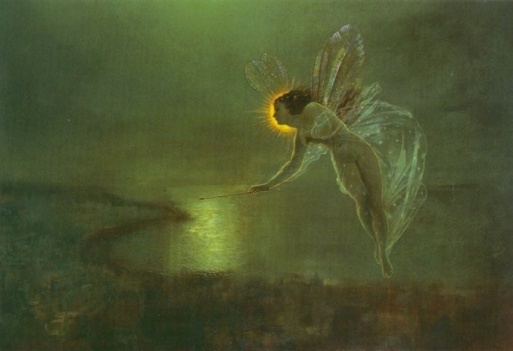
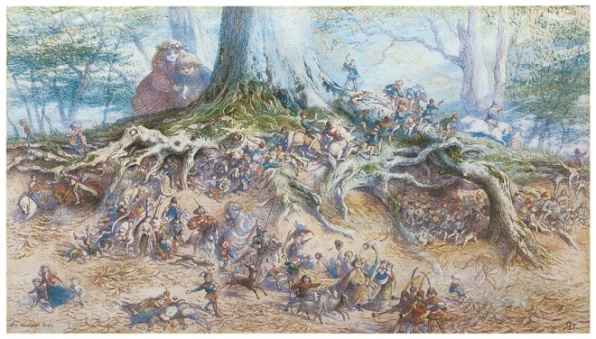
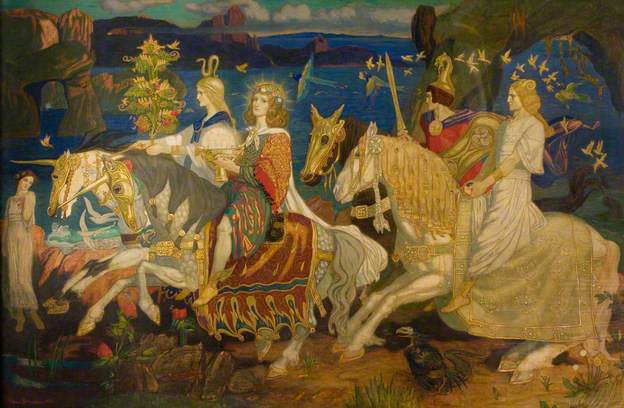

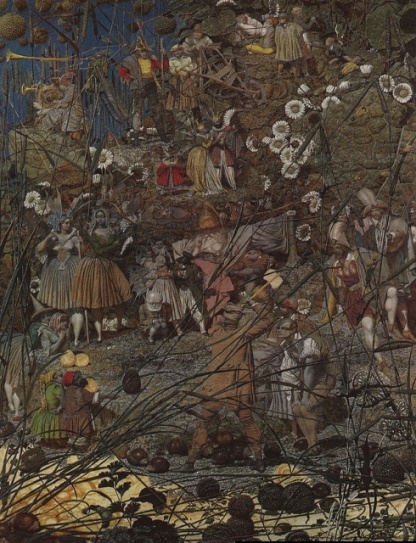
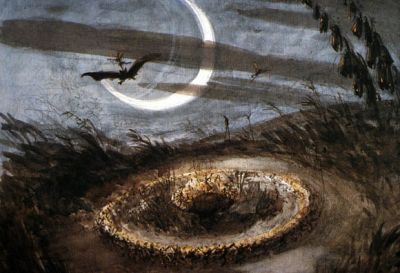
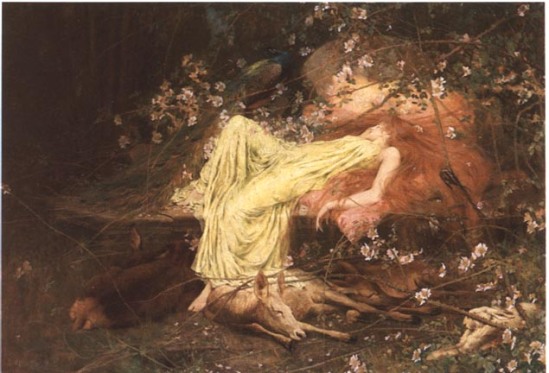
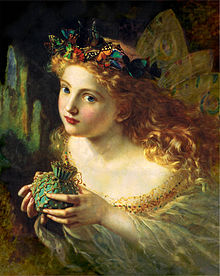

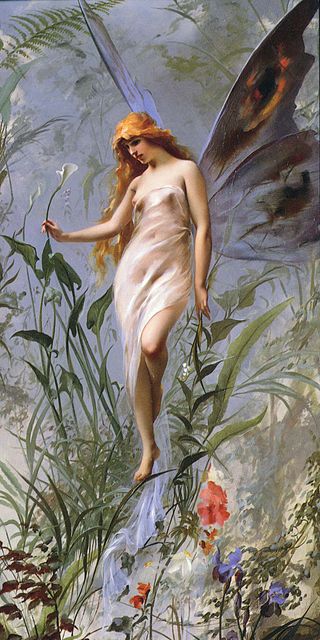
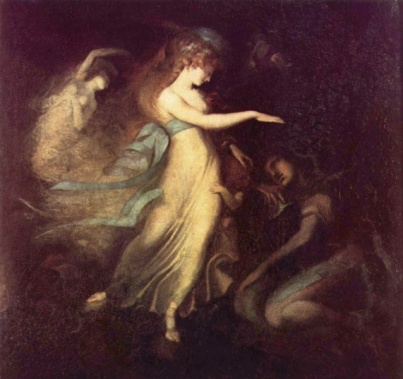
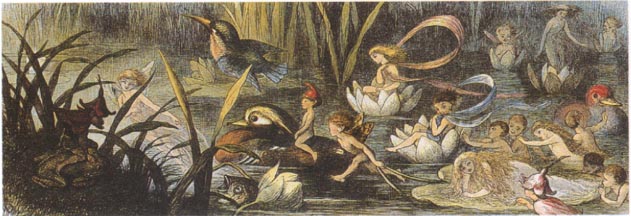


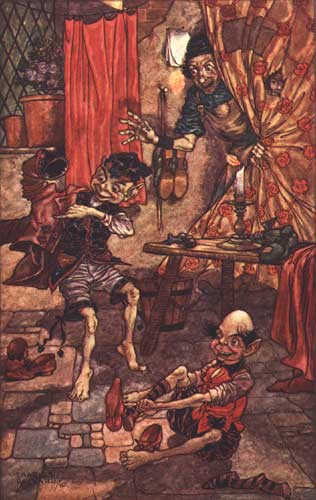
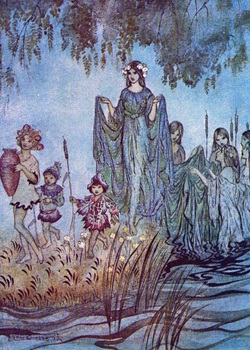
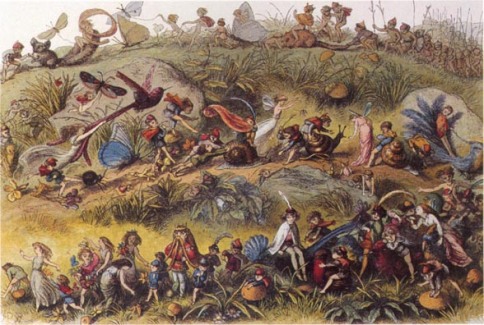

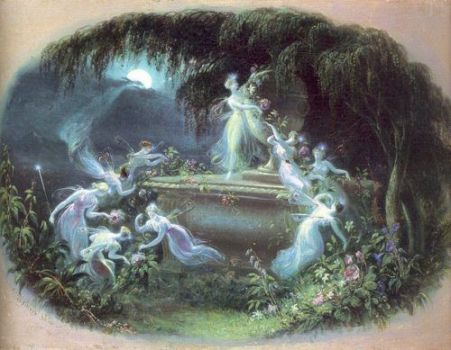
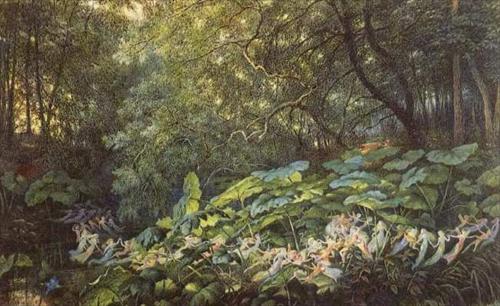
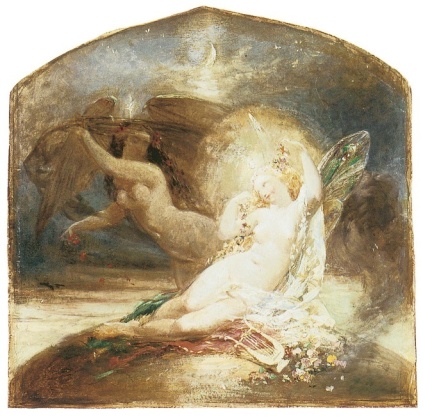
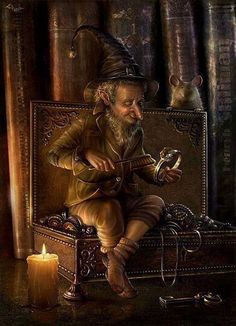


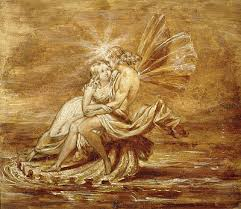


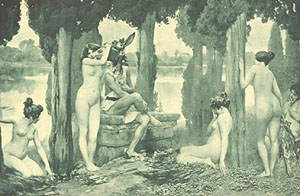


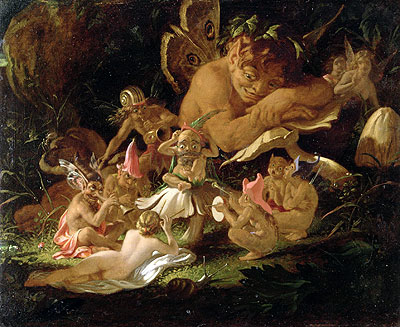

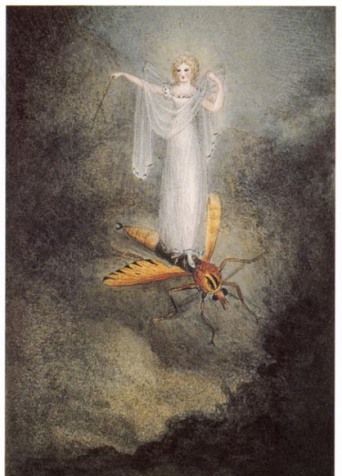
Quite an extensive post. For some reason, out of all the illustrations shown, I was impressed by The Lily Fairy.
Pingback: …If you go down to the woods today, you’d better not go alone… – If you go down to the woods today…
Reblogged this on SunRay Sorceress and commented:
The Origin and Lore Of Fairies and Fairy Land
Very cool write up!
Pingback: Episode 116: I Want To Believe: Alien Abductions – Just A Story
Pingback: The Rain Season 1 Episode 5 Have Faith Recap | Metawitches
Awesome…..I love this!!!! Thank you for this information!!!
Pingback: Partagé – Mon cadeau de la Samain : Les fées. (Livre de 411 pages composé de la traduction d’un article de 70 pages à ce sujet dont je ne suis pas l’autrice trouvé sur un très bon site sur ce thème et de 341 pages de commentaires détaill
Pingback: Kidnapped – A poem by Goff James | Art, Photography and Poetry
Pingback: Dragons, Griffins, Fairies, Oh My! Part 2 – Marlena Marie
What a superb writing. I loved it. I love that you wrote so much about it. Thank u
Pingback: Quarterly Bestiary: Kelpies: A Dive into Scottish Water Horses – Illuminating the Fool's Mirror
Pingback: Not quited our mid-season flashback blog post | What Have We Learned?
Pingback: Episode 64: Harry Caray’s Very Scary Fairies – Spooky Science Sisters